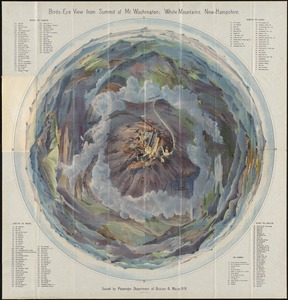Cover image by Kate McPhee who used map segments, cardboard and acrylic paint to express the feeling of being in the wild with her family.
Nikki Rosato. Untitled (Connections), 2014.
11X14", Hand-cut road map
What skills, alternateness, and inclinations does one discover by making and using a map?
A map can tell us where we are going or help us become more alert towards the process of discovery. My motivation for making a map set is to make connections between maps and art by bringing attention to the visual aspects of maps and the stories they may tell.
Use this map set as a series of art-based exercises that can bolster a semester-long mapping unit. Art teachers will find the terrain familiar with activities based around color theory, contour line and perspective drawing. English, humanities and social studies teachers can use maps from this set as a point of departure and introduce conversations around utopia/dystopia and global politics. Science and math teachers may use these maps as visual data and challenge students to translate their own data into artwork.
In terms of page layout, I juxtapose two images (one map and one artwork) to help express a common theme. Each theme reflects a generative question and offers an idea for an art activity.
Artists have always created maps and have found inspiration in them. My hope is that the ideas for projects included here can be expanded on and modified by the artist or teacher to help instill the same sense of joy we feel when making a map or using one during a great adventure.
Nikki Rosato. Untitled (Connections), 2014.
11X14", Hand-cut road map
What skills, alternateness, and inclinations does one discover by making and using a map?
A map can tell us where we are going or help us become more alert towards the process of discovery. My motivation for making a map set is to make connections between maps and art by bringing attention to the visual aspects of maps and the stories they may tell.
Use this map set as a series of art-based exercises that can bolster a semester-long mapping unit. Art teachers will find the terrain familiar with activities based around color theory, contour line and perspective drawing. English, humanities and social studies teachers can use maps from this set as a point of departure and introduce conversations around utopia/dystopia and global politics. Science and math teachers may use these maps as visual data and challenge students to translate their own data into artwork.
In terms of page layout, I juxtapose two images (one map and one artwork) to help express a common theme. Each theme reflects a generative question and offers an idea for an art activity.
Artists have always created maps and have found inspiration in them. My hope is that the ideas for projects included here can be expanded on and modified by the artist or teacher to help instill the same sense of joy we feel when making a map or using one during a great adventure.


























